ABOVE IS FULL PRESENTATION BELOW IS ORIGINAL POST WITH FAST FORWARD LINK & POST
Phi Beta Iota: We strongly recommend watching the full presentation. This is “ground zero” for the future of intelligence, along with OSE and M4IS2.
Below Graphics as 2013 Story Board Short (PPT): SHORT 1-8
INVITE Robert Steele to Speak & Nurture & Energize!
1957+ Story Board Long: Decision-Support — Analytic Sources, Models, Tools, & Tradecraft 1957-2013
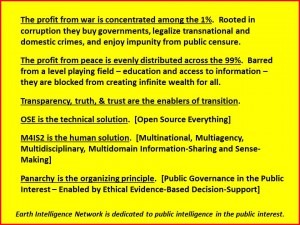
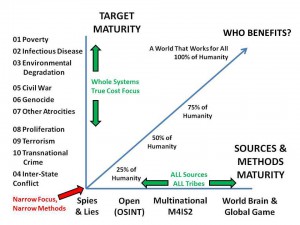
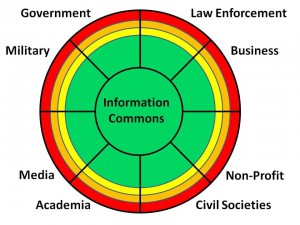
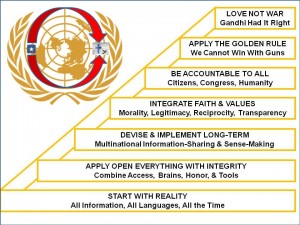
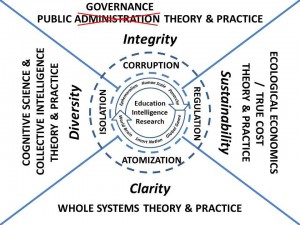
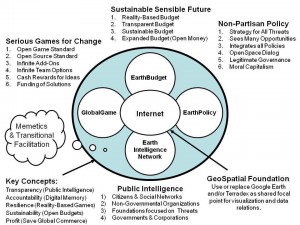
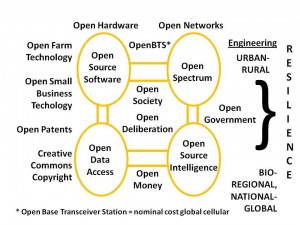
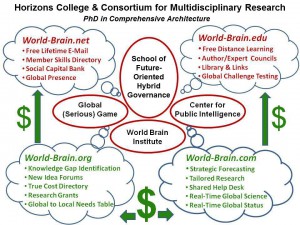

How can content curation be used in education to support and enhance the development of new media literacy skills? Paul Mihailidis from the Department of Marketing Communication at Emerson College in tandem with James N Cohen from the School of Communication at Hofstra University, have outlined six different ways in which content curation can be utilized as a key methodology to develop critical thinking, analysis and communication skills. Their analysis is based on the actual use of Storify, a content curation tool, for specific educational objectives. Useful as a reference framework for introducing content curation within pedagogical programmes. 8/10
Abstract: In today's hypermedia landscape, youth and young adults are increasingly using social media platforms, online aggregators and mobile applications for daily information use. Communication educators, armed with a host of free, easy-to-use online tools, have the ability to create dynamic approaches to teaching and learning about information and communication flow online. In this paper we explore the concept of curation as a student- and creation-driven pedagogical tool to enhance digital and media literacy education. We present a theoretical justification for curation and present six key ways that curation can be used to teach about critical thinking, analysis and expression online. We utilize a case study of the digital curation platform Storify to explore how curation works in the classroom, and present a framework that integrates curation pedagogy into core media literacy education learning outcomes.
Teaching Points (expanded upon in cited work):
Teaching point #1 – Where top down and bottom up meet
Teaching point #2 – Integrating mediums, messages, platforms
Teaching point #3 – Sources, voices, and credibility online
Teaching point #4 – Framing, bias, agenda and perspective
Teaching point #5 – Appreciating diversity
Teaching point #6 – Empowering civic values and civic voices

Back in 2003 visionary artist Anne-Marie Schleiner wrote an inspiring paper entitled “Fluidities and Oppositions among Curators, Filter Feeders and Future Artists” describing the future role of online curators as nature's own filter feeders. Anne-Marie is clearly referring to curators to and filter feeder in art world, but her rightful intuitions are equivalently applicable to the larger world of information, data, digital and content curation as well.
But let me explain better.
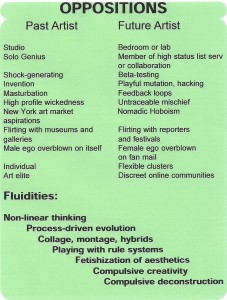
First. The term “filter feeders” is used in nature to describe a group of animals which thrives on its ability to filter organic matter floating around them. From Wikipedia: “Filter feeders are animals that feed by straining suspended matter and food particles from water, typically by passing the water over a specialized filtering structure. Some animals that use this method of feeding are clams, krill, sponges, baleen whales, and many fish (including some sharks). Some birds, such as flamingos, are also filter feeders. Filter feeders can play an important role in clarifying water, and are therefore considered ecosystem engineers.” From Wikipedia: “In marine environments, filter feeders and plankton are ecosystem engineers because they alter turbidity and light penetration, controlling the depth at which photosynthesis can occur.[4]”
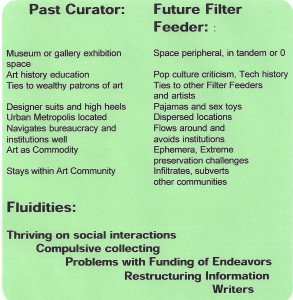
Second. If you re-read this last sentence slowly and look at what it could mean if applied to the field of content curation, it would read to me something like this: “In large information ecosystems like the web, filter feeders/content curators and content itself are ecosystem engineers because they: a) directly influence our ability to inform ourselves effectively and to discern truth from false and useless info (turbidity) b) shed light and clarity on different subjects which would otherwise remain obscure (light penetration) c) determine our ability to make sense of our own generated information streams (photosynthesis).” A very inspiring parallel indeed, giving a way to visualize the true importance and role that curation, disenfranchised from the confines of museums and art galleries, could have on the planetary information ecosystem. Anne-Marie writes: “Most web sites contain hyperlinks to other sites, distributed throughout the site or in a “favorites” section. Each of these favorite links sections serves as a kind of gallery, remapping other web sites as its own contents. Every web site owner is thus a curator and a cultural critic, creating chains of meaning through association, comparison and juxtaposition, parts or whole of which can in turn serve as fodder for another web site's “gallery.” Site maintainers become operational filter feeders, feeding of other filter feeders sites and filtering others' sites. Links are contextualized, interpreted and “filtered” through criticism and comments about them, and also by placement in the topology of a site. The deeper a link is buried, the harder it may be to find, the closer to the surface and the frontpage, the more prominent it becomes, as any web designer can attest to. I am what I link to and what I am shifts over time as I link to different sites… … In the process, I invest my identity in my collection – I become how I filter.” Anne-Marie vision (2003), pure and uninfluenced by what we have seen emerge in the last few years, paints a very inspiring picture of the true role of content curators and of the key responsibility they do hold for humanity's future. Inspiring. Visionary. Right on the mark. 10/10

I think your thought piece on NATO is excellent, but somewhat incomplete. NATO is the diplomatic and administrative headquarters, but the Supreme Headquarters Allied Powers Europe (SHAPE) is the actual C2 for NATO military operations
In my opinion, the U.S. needs to back out of NATO and its operational counter part SHAPE and leave both to the EU (as you suggest). The U.S. could join Russia in an observer status at NATO, but would no longer be a voting member. Both NATO and SHAPE would be under the EU, but would include non-EU members (e.g. Turkey).
This would do two beneficial things: it would provide Europe with a dedicated all European military force; and it would facilitate the move towards greater integration of EU member countries.
The benefits to the U.S. would also be significant by forcing the U.S. to recognize that the Cold War is over and there is no longer any reason to have a major U.S. Military presence in Germany (Italy is another matter given its proximity to the still volatile Maghreb)
I think that your proposal for a dedicated EU-NATO Intelligence Organization is absolutely brilliant, but again I would add a second intelligence entity to SHAPE for support to military operations (SMO). Both of these organizations would be all European.
I too am a non-player in the power games inside the DC Beltway. If I had any influence you would not be unemployed. Frankly I believe that the executive and legislative branches of the U.S. Government have lost interest in governing this country and are just going through the motions. So expecting the U.S. to take the initiative with NATO is fruitless.
Susan Rice is a brilliant and effective woman who I suspect will be ignored by President Obama, just as he ignored the super competent General Jones (who I became acquainted with when he headed the U.S. DOD Delegation at NATO).
Keep fighting the good fight!
Richard (AKA Retired Reader)

Rachel Botsman: How We Treat People Will Ultimately Drive Our World
Rachel Botsman advocated the advantage of reputation capital at Wired Money in London yesterday. She noted that an economy based on reputation is incredibly empowering, and will take us away from a financial world “based largely on faceless transactions and moving us to an age built on humanness that we [have] lost.” The reputation economy has already begun to take effect—Airbnb user Kate Kendall used Airbnb reviews to secure an apartment lease.
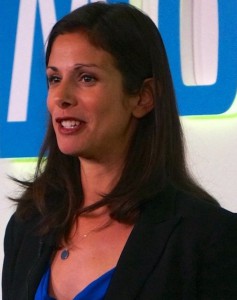
A reputation-based system will take time to establish, but has the potential to revolutionize the financial sector. This type of credibility adds “context, cause and character” to currently anonymous transactions. “How we treat people and how we behave will ultimately drive our world,” Botsman says.

Noowit is a new curation and publishing platform that allows you to do on the web something very similar to what Flipboard allows you to do with your smartphone or tablet. You can curate a beautiful-looking web magazine, by selecting content from its internal news discovery engine or by clipping any content you find on the web with the dedicated NOOWIT bookmarklet.
On the backend you can select individual topics, authors and specific sources you want to subscribe to, to keep yourself informed. You can provide specific RSS feeds or import your collection of RSS subscriptions. You can create multiple content sections inside a magazine and when you add new content you can easily decide in which section it is going to end up. A swift navigation scheme provides almost seamless integration between the excerpted content that appears in the magazine and the full, original resource that you can navigate to without losing touch with the rest of the magazine. NOOWIT magazines can be set to be public or private and they can be viewed across devices and screen of all sizes. Like on Flipboard it is now possible to edit, modify or add to content that you pick and select to be added to your magazines.
My comment: NOOWIT easily creates great-looking digital magazines of your selected articles and resources. It is a great tool for anyone wanting to create easily a “splashy” curated digital magazine that looks great across devices with the minimum effort possible.
Private beta: http://www.noowit.com/
Preview: http://www.noowit.com/pbeta
Example I created: http://www.noowit.com/RobinGood